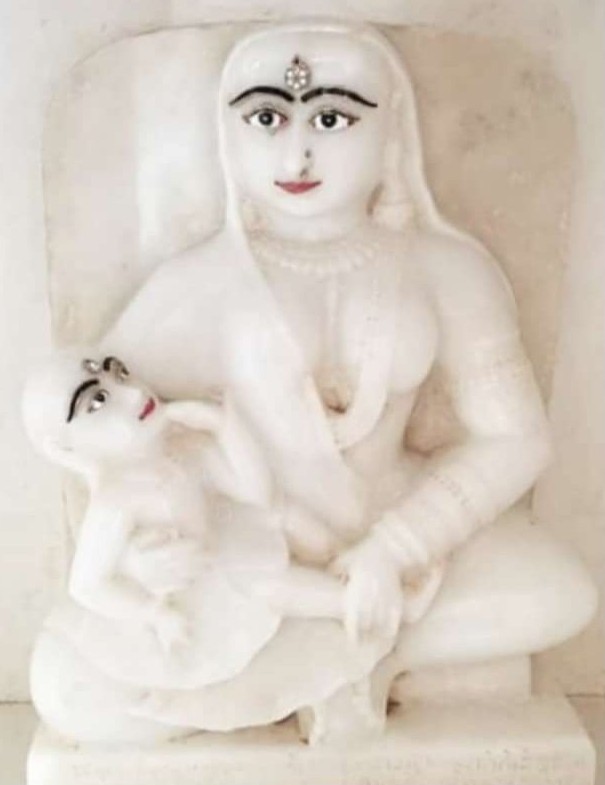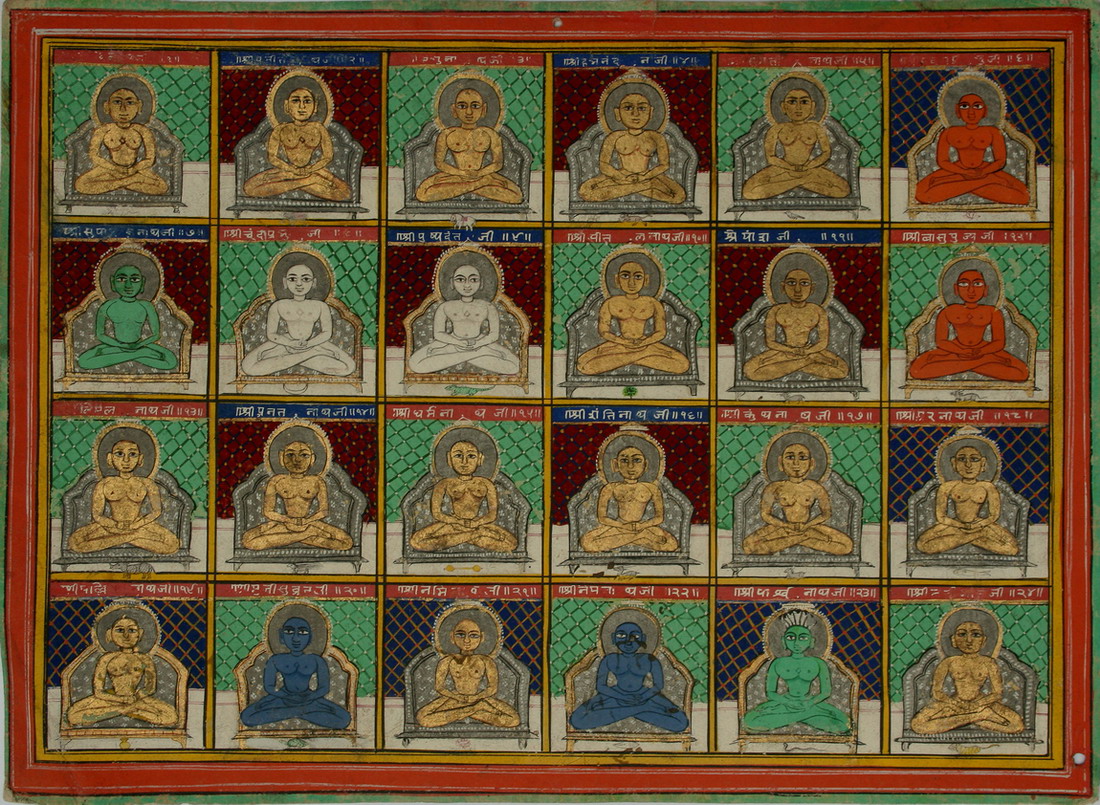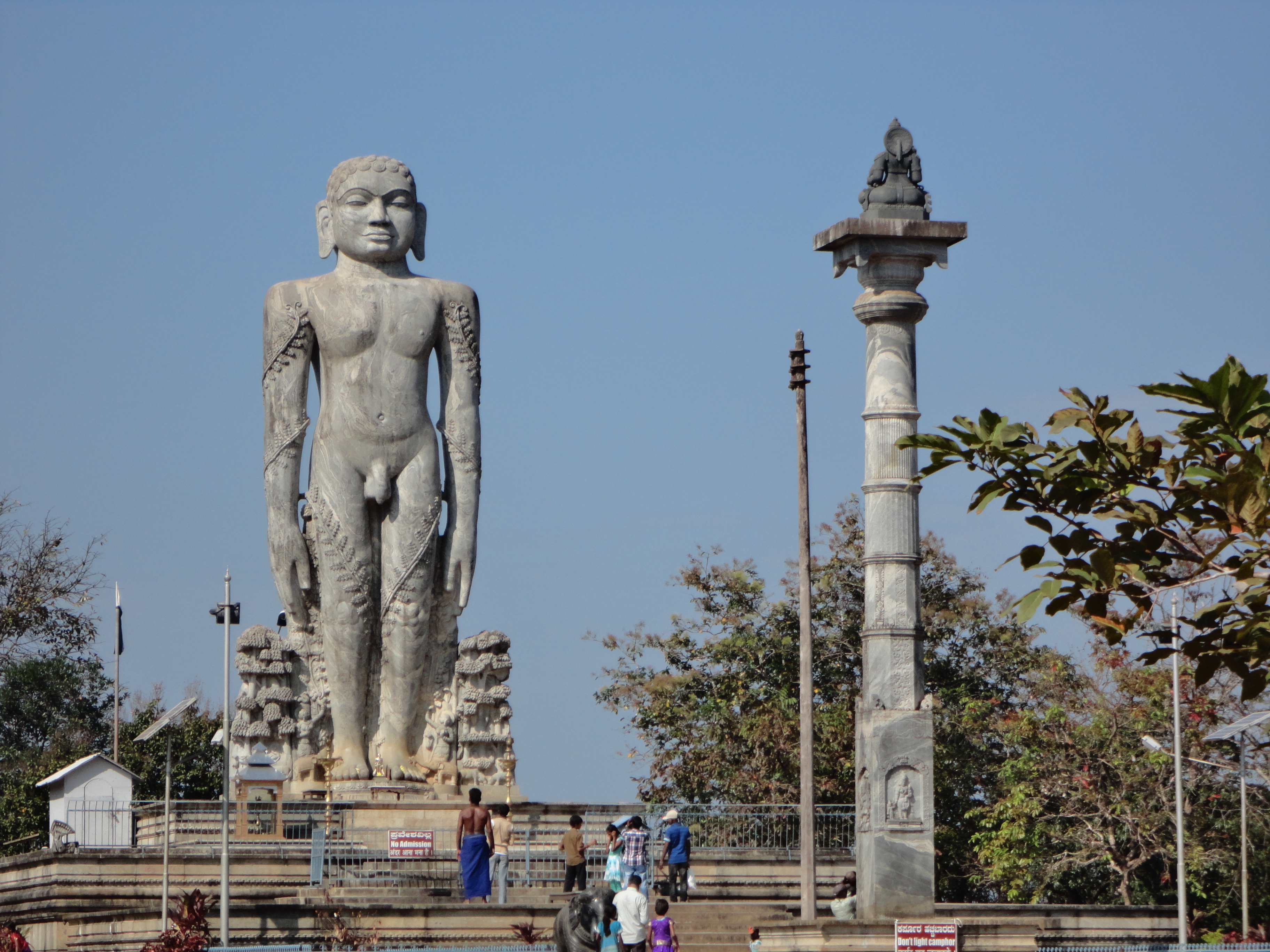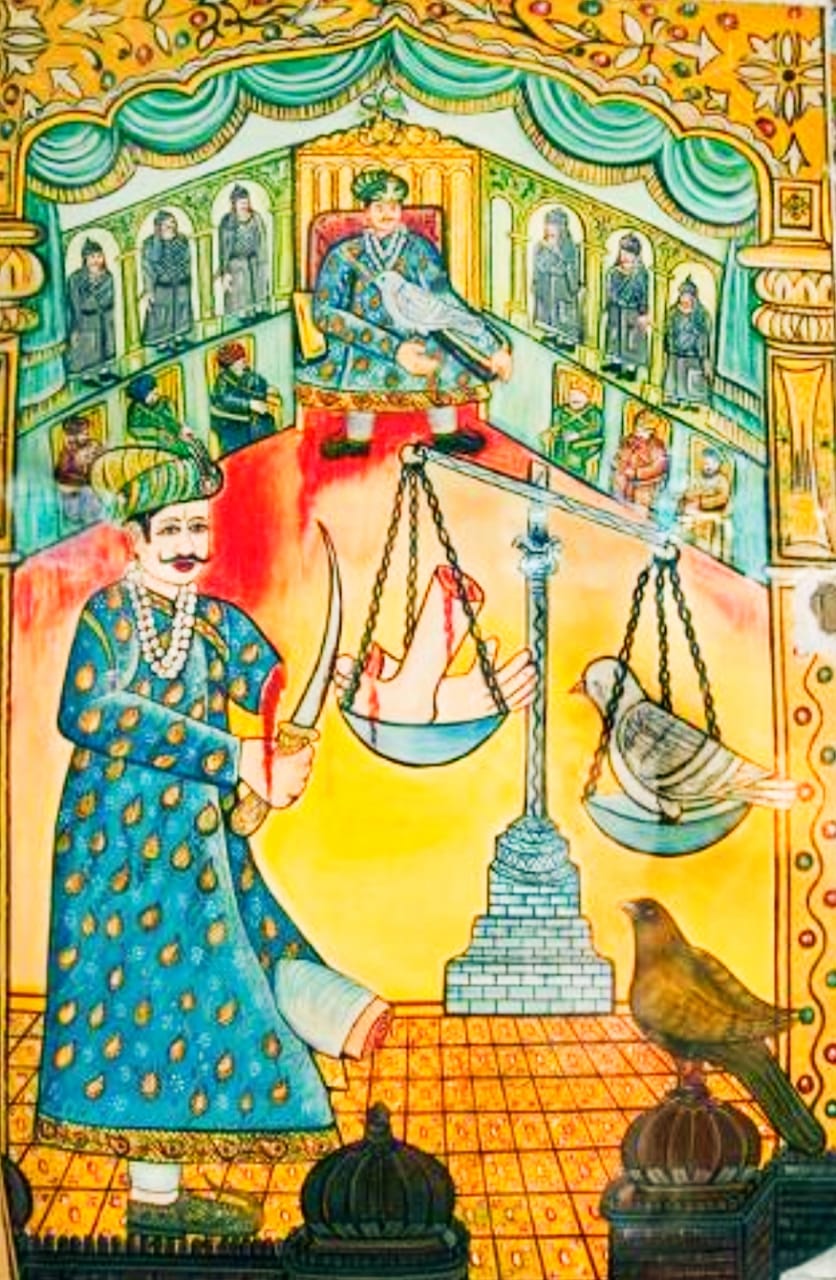|
Rishabhanatha
Rishabhanatha (Devanagari: ऋषभनाथ), also Rishabhadeva (Devanagari: ऋषभदेव, ), Rishabha (Devanagari: ऋषभ, ) or Ikshvaku (Devanagari: इक्ष्वाकु, ''Ikṣvāku''), is the first (Supreme preacher) of Jainism. He was the first of twenty-four teachers in the present half-cycle of time in Jain cosmology and called a "ford maker" because his teachings helped one cross the sea of interminable rebirths and deaths. The legends depict him as having lived millions of years ago. He was the spiritual successor of Sampratti Bhagwan, the last Tirthankara of the previous time cycle. He is also known as Ādinātha (), as well as Adishvara (first Jina), Yugadideva (first deva of the yuga), Prathamarajeshwara (first God-king) and Nabheya (son of Nabhi). He is also known as Ikshvaku, establisher of the Ikshvaku dynasty. Along with Mahavira, Parshvanath, Neminath, and Shantinath, Rishabhanatha is one of the five Tirthankaras that attract the most d ... [...More Info...] [...Related Items...] OR: [Wikipedia] [Google] [Baidu] |
Akshaya Tritiya
Akshaya Tritiya, also known as Akti or Akha Teej, is an annual Jain and Hindu spring festival. It falls on the third ''tithi'' (lunar day) of the bright half (''Shukla Paksha'') of the Hindu month of Vaisakha. This day is auspicious for those who buy rice, deposit money in a bank account, buy any kind of new things or vessels - visiting temples, donating foods or special offers for poor people, or helping poor children for their education fees, all are good signs for Akshaya Tritiya. Overview Akshaya Tritiya is regionally observed as an auspicious day by Hindus and Jains in India; Gupte 1994, p. 5 it signifies the "third day of unending prosperity". Akshaya Tritiya is considered auspicious by Hindus and Jains in many regions of India and Nepal for new ventures, marriages, charity, and in investments such as gold or other property. It is also a day of remembrance for the loved ones who have died. Rituals are often performed to honor departed souls on this day. The day is regio ... [...More Info...] [...Related Items...] OR: [Wikipedia] [Google] [Baidu] |
Marudevi
Marudevī was the mother of the first Jain Tirthankara, Rishabhanatha and the queen of King Nabhi. According to the Śvetāmbara canon, she was the first person to have attained Moksha in the current Avasarpiṇī. Birth of Rishabhanatha The enlivening of the embryo through the descent of the future Tīrthankara's soul in the mortal body is celebrated as ''Garbha Kalyānaka'' At this time, Queen Marudevi dreamt fourteen auspicious dreams (Śvetāmbara belief) or sixteen auspicious dreams (Digambara belief). According to Digambara accounts, King Nabhirāja, who was endowed with clairvoyance, explained the significance of these dreams to her in the morning. As per Śvetāmbara monk, Acharya Hemachandrasuri's Triṣaṣṭiśalākāpuruṣacarita, celestial beings, including Indra, interpreted and explained the meaning of these dreams to Queen Marudevi as described below: - The interpretation of 16 dreams as believed by the Digambara sect is as follows: - After these ... [...More Info...] [...Related Items...] OR: [Wikipedia] [Google] [Baidu] |
Bharata (Jainism)
In Jainism, Bharata was the first ''chakravartin'' (lit. 'holder of a ''chakra''', i.e., emperor) of the Avasarpini (present half-time cycle). He was the eldest son of Rishabhanatha, the first ''tirthankara''. The ancient name of India was named Bhāratavarsha or Bhārat or Bharata-bhumi after him. He had two sons from his chief-empress Subhadra, named Arkakirti and Marichi. He is said to have conquered all six parts of the world and to have engaged in a fight with Bahubali, his brother, to conquer the last remaining city of the world. According to the Digambara sub-tradition of Jainism, in his later years, he renounced the world, led an ascetic life, and attained '' kevala jnana'' (omniscience). According to the Śvetāmbara Jains, he attained ''kevala jnana'' (omniscience) after which he renounced the world. He gained ''kevala jnana'' when he came to believe that the human body lacked beauty and renounced the world as a ''kevalajnani'' (omniscient), and then attained moksha. ... [...More Info...] [...Related Items...] OR: [Wikipedia] [Google] [Baidu] |
Jainism
Jainism ( ), also known as Jain Dharma, is an Indian religions, Indian religion whose three main pillars are nonviolence (), asceticism (), and a rejection of all simplistic and one-sided views of truth and reality (). Jainism traces its spiritual ideas and history through the succession of twenty-four , supreme preachers of ''dharma''. The first in the current time cycle is Rishabhadeva, who tradition holds lived millions of years ago; the 23rd is Parshvanatha, traditionally dated to the 9th century Common Era, BCE; and the 24th is Mahāvīra, Mahavira, who lived . Jainism is considered an eternal ''dharma'' with the guiding every time cycle of the Jain cosmology, cosmology. Central to understanding Jain philosophy is the concept of ''bhedavijñāna'', or the clear distinction in the nature of the soul and non-soul entities. This principle underscores the innate purity and potential for liberation within every Jīva (Jainism), soul, distinct from the physical and menta ... [...More Info...] [...Related Items...] OR: [Wikipedia] [Google] [Baidu] |
Ikshvaku Dynasty
The Solar dynasty or (; ), also called the Ikshvaku dynasty, is a legendary Indian dynasty said to have been founded by Ikshvaku. In Hindu literature, it ruled the Kosala Kingdom, with its capital at Ayodhya, and later at Shravasti. They worshipped their clan deity, Surya (a Hindu solar deity), after whom the dynasty is named. Along with the Lunar dynasty, the Solar dynasty comprises one of the main lineages of the Kshatriya varna in Hinduism. According to Jain literature, the first ''Tirthankara'' of Jainism, Rishabhanatha himself, was King Ikshvaku. Twenty-one further ''Tirthankaras'' were born in this dynasty. According to Buddhist literature, Gautama Buddha descended from the this dynasty. The important personalities belonging to this royal house are Mandhatri, Muchukunda, Ambarisha, Bharata, Bahubali, Harishchandra, Dilīpa, Sagara, [...More Info...] [...Related Items...] OR: [Wikipedia] [Google] [Baidu] |
Nabhi
King Nabhi or Nabhi Rai was the 14th or the last '' Kulakara'' of '' avasarpini'' (the descending half of the cosmic time cycle in Jainism and the one in which the world is said to be at present). He was the father of Rishabhanatha, the first ''tirthankara'' (founder of Jainism) of present ''avasarpini''. According to Jain text '' Ādi purāṇa'', Nabhirāja lived for 1 crore ''purva'' and his height was 525 ''dhanusha'' (long bows). According to Jain literature, India was known as '' Nābhivarṣa'' (land of Nabhi) before being renamed as ''Bhāratavarṣa'' after Bharata, the son of Rishabhanatha. Life King Nabhi or Nabhi Rai was the fourteenth or the last '' Kulakara'' of ''avasarpini''. He taught the men how to cut the ''nabhi'' ( navel chords) and organised them into social polity. Marudevi, queen of king Nabhi, saw the 14 auspicious dreams. When she shared her dreams with the king, he explained that she will give birth to a ''tirthankara''. She then gave birth to Ri ... [...More Info...] [...Related Items...] OR: [Wikipedia] [Google] [Baidu] |
Tirthankara
In Jainism, a ''Tirthankara'' (; ) is a saviour and supreme preacher of the ''Dharma (Jainism), dharma'' (righteous path). The word ''tirthankara'' signifies the founder of a ''Tirtha (Jainism), tirtha'', a fordable passage across ''Saṃsāra (Jainism), saṃsāra'', the sea of interminable birth and death. According to Jains, ''tirthankaras'' are the supreme preachers of ''dharma'', who have conquered ''saṃsāra'' on their own and made a path for others to follow. After understanding the true nature of the self or soul, the ''Tīrthaṅkara'' attains ''kevala jnana'' (omniscience). A Tirthankara provides a bridge for others to follow them from ''saṃsāra'' to ''moksha'' (liberation). In Jain cosmology, the wheel of time is divided into two halves, Utsarpiṇī', the ascending time cycle, and ''avasarpiṇī'', the descending time cycle (said to be current now). In each half of the cycle, exactly 24 ''tirthankaras'' grace this part of the universe. There have been infini ... [...More Info...] [...Related Items...] OR: [Wikipedia] [Google] [Baidu] |
Bahubali
Bahubali (, ) was the son of Rishabhanatha (the first ''tirthankara'' of Jainism) and the brother of the ''Chakravarti (Sanskrit term), chakravartin'' Bharata (Jainism), Bharata. He is a revered figure in Jainism. He is said to have meditated motionless for 12 years in a standing posture (''kayotsarga''), with climbing plants having grown around his legs. After his 12 years of meditation, he is said to have attained omniscience (''Kevala Jnana, kevala jnana''). Bahubali's other names are Kammateshwara and Gommateshwara, the namesake of the Gommateshwara statue dedicated to him. Legends The ''Adipurana'', a 9th-century Sanskrit poem, deals with the ten lives of the first ''tirthankara'', Rishabhanatha and his two sons Bharata Chakravartin, Bharata and Bahubali. It was composed by Jinasena, a ''Digambara monk''. Family life According to Jain texts, Bahubali was born to Rishabhanatha and Sunanda during the Ikshvaku dynasty in Ayodhya (Ramayana), Ayodhya. He is said to have e ... [...More Info...] [...Related Items...] OR: [Wikipedia] [Google] [Baidu] |
Neminath
Neminātha (Devanagari: नेमिनाथ) (Sanskrit: नेमिनाथः), also known as Nemi and Ariṣṭanemi (Devanagari: अरिष्टनेमि), is the twenty-second tirthankara of Jainism in the present age (). Neminath lived 84,000 years before the 23rd ''Tirthankar'' Parshvanath. According to traditional accounts, he was born to King Samudravijaya and Queen Shivadevi of the Yadu dynasty in the north Indian city of Sauripura. His birth date was the fifth day of ''Shravan Shukla'' of the Jain calendar. Balarama and Krishna, who were the 9th and last Baladeva and Vasudeva respectively, were his first cousins. Neminatha, when heard the cries of animals being killed for his marriage feast, freed the animals and renounced his worldly life and became a Jain ascetic. The representatives of this event are popular in Jain art. He had attained ''moksha'' on Girnar Hills near Junagadh, and became a siddha, a liberated soul which has destroyed all of its ka ... [...More Info...] [...Related Items...] OR: [Wikipedia] [Google] [Baidu] |
Shantinath
Śāntinātha () or Śānti is the sixteenth of Jainism in the present age (). According to traditional accounts, he was born to King Vishvasena and Queen Aćira of the Ikshvaku dynasty in the north Indian city of Hastinapur. His birth date is the thirteenth day of the Jyest Krishna month of the Indian calendar. He was also a and a . He ascended to the throne when he was 25 years old. After over 25,000 years on the throne, he became a Jain monk and started his penance. After renunciation, the legends state that he travelled without food and sleep and after sixteen years received his first ' (food) after achieving . He attained ''Moksha'' on Sammed Shikharji and became a siddha, a liberated soul which has destroyed all of its karma. Along with Rishabhanatha, Neminatha, Parshvanatha and Mahavira, Shantinatha is one of the five Tirthankaras who attract the most devotional worship among the Jains. His icons include the eponymous deer as his emblem, the Nandi tree, ''Garuda ... [...More Info...] [...Related Items...] OR: [Wikipedia] [Google] [Baidu] |
Bhaktāmara Stotra
The ''Bhaktāmara Stotra'' () is a Jain religious hymn (''stotra'') written in Sanskrit. It was authored by Manatunga (7th century CE). The Digambaras believe it has 48 verses while Śvetāmbaras believe it consists of 44 verses. The hymn praises Rishabhanatha, the first Tirthankara of Jainism in this time cycle. Authorship ''Bhaktāmara Stotra'' was composed by Manatunga in 6th century CE. Shwetambar legends associate Manatunga with a ruler named Mihira Bhoja. However, Manatunga probably lived a few centuries before Bhoja. He is identified by some scholars as Kshapanaka, one of the Navaratnas in the court of legendary Vikramaditya. An unidentified Sanskrit poet Matanga, composer of ''Brahaddeśī'' on music theory, may also have been the same person. ''Bhaktāmara Stotra'' was composed sometime in the Gupta or the post-Gupta period, making Manatunga approximately contemporary with other navaratnas like Kalidasa and Varahamihira. Several spots near Bhopal and Dhar are tra ... [...More Info...] [...Related Items...] OR: [Wikipedia] [Google] [Baidu] |







